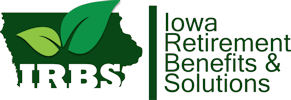The Crucial Role of Financial Representatives in Retirement
Posted by Ethan Ball
Serving Cedar Rapids, Iowa, and Surrounding Areas.
How Much Should I Take From My Investments?
When it comes to retirement, one of the biggest questions people face is: “How much should I withdraw from my investments each year?” It’s a big deal because you don’t want to run out of money too soon, but you also want to enjoy the fruits of your hard work. So, how do you find that sweet spot?
The 4% Rule – A Good Starting Point
You’ve probably heard of the 4% rule. It’s one of the most popular guidelines for determining how much to withdraw each year in retirement. The idea is that if you withdraw 4% of your portfolio in the first year of retirement, then adjust that amount for inflation each year, you should have enough to last around 30 years. It’s simple and has worked well for a lot of people.
But a successful withdrawal strategy in retirement doesn’t just mean sticking to a certain percentage. You’ll probably need to make adjustments over time as your goals and income needs change, and that is where your Iowa Retirement Benefits & Solutions can help tailor this guidance to your situation.
But, like any rule of thumb, it’s not one-size-fits-all.
Things to Consider Before Withdrawing
1. Your Expenses
The 4% rule assumes you’re going to need roughly the same amount of money each year in retirement, but that’s not always the case. Maybe you plan to travel a lot early on, which could mean higher expenses in your first few years. Or, perhaps you’ll pay off your mortgage, meaning your expenses drop significantly. The point is: your withdrawal rate should match your lifestyle and needs, not just what a rule says.
2. Market Performance
Let’s face it, the stock market can be unpredictable. If you retire and the market has a rough year or two, pulling 4% might feel like too much. Some people adjust their withdrawals based on how their investments are doing. If the market’s up, they take a little more; if it’s down, they pull back a bit. It requires some flexibility, but it can help your money last longer.
3. Longevity
People are living longer these days, and that’s something to factor in. If you retire at 65, you could easily live another 25 or even 30 years. This might mean withdrawing less than 4% in the early years to make sure your money stretches further.
4. Taxes
Don’t forget about taxes! The amount you withdraw from your 401(k), IRA, or other tax-deferred accounts will be taxed as regular income. So if you need $40,000 to live on, you might have to withdraw more to cover your tax bill. Planning ahead can help avoid surprises at tax time.
Staying Flexible– Timing Matters
Ultimately, there’s no magic formula for how much to withdraw from your investments, but flexibility is key. One thing that’s often overlooked is the sequence of returns. This refers to the order in which you experience good and bad years in the market. If you have a couple of bad years early in retirement and you’re withdrawing money at the same time, it can significantly reduce your portfolio’s longevity. The 4% rule can be a helpful guide, but your personal situation, goals, and market conditions should drive your decisions. Think of it like this: withdrawing money when your investments are down means you’re selling low, which makes it harder for your portfolio to recover when the market rebounds.
To help protect against this, you might consider reducing withdrawals or keeping a cash reserve for those down years. It’s all about protecting your investments from being hit too hard when the market dips early on.
Struggling for income? Steps to consider
If you’re worried about running out of money or finding it tough to create a steady income stream in retirement, an income annuity could be a solution. Income annuities are designed to provide you with guaranteed payments for life or a set number of years, no matter how the market performs. It’s like creating your own pension, giving you peace of mind knowing that a portion of your income is secure.
Annuities aren’t for everyone, but if you’re looking for more stability in your retirement income, it might be worth considering as part of your overall strategy.
Wrapping It Up
Managing your withdrawals is one of the most important parts of your retirement plan. You’ve worked hard to build your nest egg, so take the time to plan it out thoughtfully. If you’re unsure, and preparing for retirement in Cedar Rapids, consider working with a trusted financial professional at Iowa Retirement Benefits & Solutions who can help you navigate these challenges and keep your investment strategy on track
.
Investment advisory services are offered through Fusion Capital Management, an SEC registered investment advisor. The firm only transacts business in states where it is properly registered or is excluded or exempted from registration requirements. SEC registration is not an endorsement of the firm by the commission and does not mean that the advisor has attained a specific level of skill or ability. All investment strategies have the potential for profit or loss.




